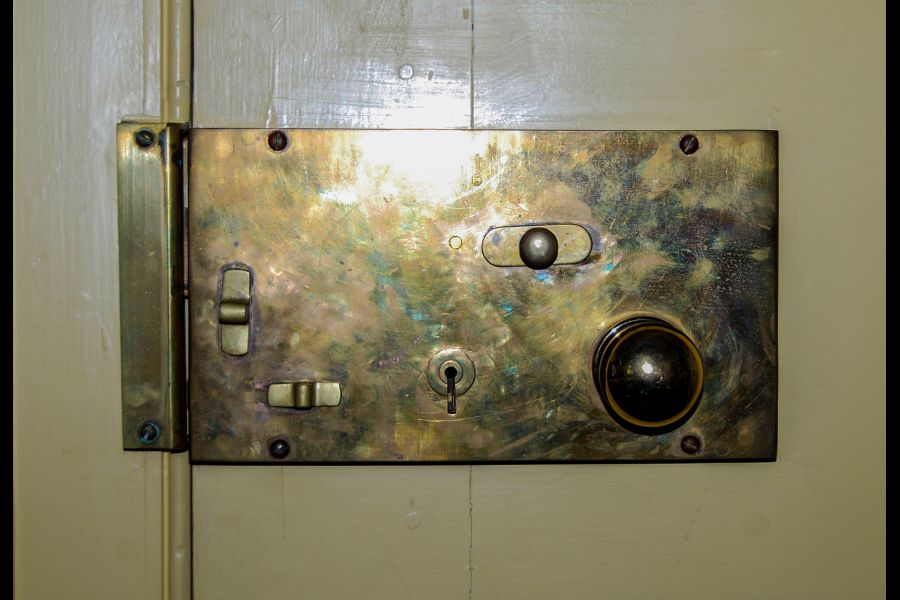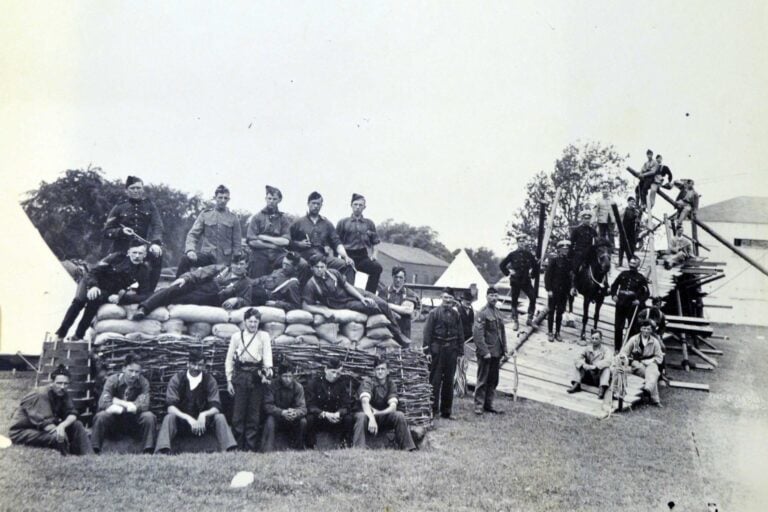You are a gentleman of the late 18th century who is calling upon the impressive home of Mr. D.W. Smith Esq.
Mounting the stairs to the front entrance, the decorative iron ring knocker is prominently displayed. The absence of any door knob does not surprise you; very few homes bothered with a knob or a pull when the knocker served to swing the door shut from the outside on the rare occasion that was necessary.
However, the presence of the keyway set into the door was a clear sign that there was an expensive plate lock mounted inside, representative of the homeowner’s status.
A few moments after using the knocker to announce your arrival, the door is opened by a household servant to whom you give your card (or failing such, provided your name), after which the door is closed again as you wait outside for the master of the house to issue you an invitation to enter.
Once invited inside, as you are shown to the formal parlour, you note the brass-knobbed spring latches on the interior doors, another sign of Mr. Smith’s success.
Now, had this visit occurred sometime in the 1820s, there is every likelihood that the plate lock on the front door would have been replaced by a brass Carpenter-style rim lock with or without an external pull knob (functional door knobs would not be introduced until after 1830).
That door knocker would have been just as prominent and, while most interior doors would likely still be sporting exposed spring latches, the doors to the parlour and master’s study off the front foyer may also have had rim locks installed.
Let’s take a moment to describe each of these locksets.
A plate lock is essentially a box mounted to the inside of a door which contains a flat bar that is thrown by turning a patterned key in the keyway. This bar engages into a keeper that is surface-mounted onto the door frame.
A spring latch is comprised of a metal plate surface mounted on the inside of a door. A flat metal bar is attached to this plate with a pin that allows it to pivot up and down (using the knob on one end) to latch it into a hook mounted on the door frame.
There is a small “V” spring attached to the metal backer plate above the locking bar, which acts to hold it down in the hook. Some spring latches incorporated a keyed bolt similar to that of a plate lock and the backer plates could be ornamental (most commonly a keyhole shape).
If the spring latch workings were enclosed in a case, it was referred to as a rim latch.
In 1820, Joseph Carpenter patented his rim lock. In reality, this lock was simply an upgraded rim latch containing both the lift action bar and a sliding bolt keyed to both sides such that entry was impossible without a key.
The spring latch hook was replaced by an enclosed metal keeper. Typically, these rim locks were weighty affairs made in brass or cast iron or a combination of both.
Although the 19th century was a hotbed of innovation, most door-related developments focused on the locking mechanism and door knobs (the latter with over 100 patent applications filed between 1830 and 1850), so the rim lock in various sizes was the go-to through most of the 1800s.
Interestingly, while mortised locks (mounted inside the door stile) were available from the late 1700s, they were prohibitively expensive until the late Victorian period.
And through it all, it was the knocker that was the main feature on most doors.











